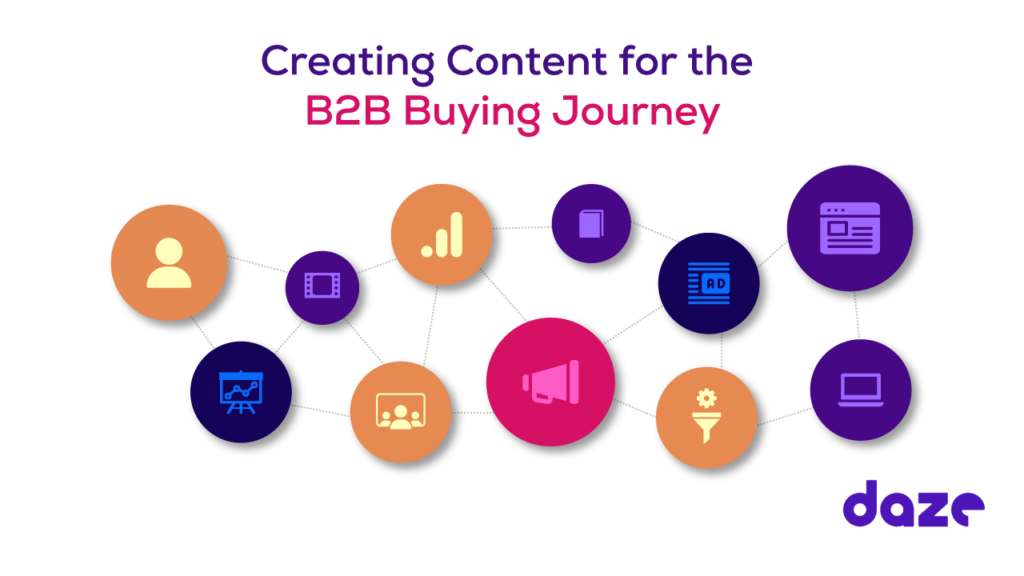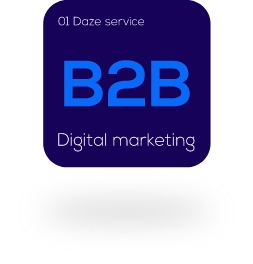Understanding B2B
B2B, as you probably know if you got here, stands for – Business to Business. That is – businesses that sell their products and services to other businesses. B2B sale-cycles tend to be longer and involve a number of different people from the buying company.
B2B is usually equated to the B2C – business to customer – sales process. While B2C deals with larger audience sizes, where decisions are made by one or two individuals, B2B requires skilled and well-informed sales representatives. B2B SDRs will handle fewer clients, but they will be well versed in the professional realms of their company’s needs.
Marketing B2B
Understanding the specific needs of B2B sales will help you market your products and services better within the business world. When building a winning B2B marketing strategy, keep these best practices in mind:
- Exude professionalism – display in-depth knowledge of the industry, the work processes and down to the specific needs of the department and professionals using the product/service.
- Precise targeting – some B2B marketers have a product that will fit a wide range of companies, while others are extremely industry-specific. Either way, there are only a few decision-makers that concern your offering in every company, making a personalized targeting ever more important for B2B marketers.
- Be kind – the most common mistake B2B marketers tend to make is forgetting that we are dealing with people. Selling to companies might sometimes seem like you are only supposed to talk about technical issues, and those are crucial, but it is also very important to remember that people are handling the process. Don’t neglect the emotional aspect of marketing.
- Start a conversation – B2B customer journeys are long, budgets need to be considered, changed in work processes, and sometimes even personnel. You will rarely get a client to click on your first message and purchase, unlike B2C where some might see an ad and convert to buying right away. Adopt a conversational mood, remember you are talking to people and be upfront and forthcoming with your knowledge.
Some Important B2B Marketing Terms
Thought Leadership
Every business holds a knowledge base that can prove highly valuable for its clients. Most of the marketing messaging, be it ads or other content pieces, is usually posted out of the official brand accounts. As authentic and trustworthy as you can get your brand to be, people relate more to other people. This is why a brand should encourage and help its highest-profile executives to share their knowledge on social media.
Note! Thought leadership is NOT another way to push your promotional messages. If you abuse your top-notch names for simple promotions they will lose influence and subsequently, their name will not work as you need it to. Thought Leadership is an INBOUND marketing method in which valuable information is spread out using a person’s name to establish their authority in the field. When followers connect the person with the brand, their weight will then lend itself to the brand name. Appearing regularly wherever your prospects and clients visit online, will also keep that person on the top of their minds and consequently – your brand.
Thought leadership is by no means a quick and easy marketing method – it requires effort, coherence, informed ideas and frequent posting – but it is one of the best ways to make your brand approachable and respected by the community you wish to impress.
Account-Based Marketing (ABM)
When marketing to other businesses one might take many routes, one of the newer options is analyzing the desired prospectus companies (AKA “accounts”) and marketing directly to the stakeholders within those companies. ABM can be used in email marketing, paid campaigns, marketing automation, and other outbound campaigns.
Since ABM is a highly targeted approach, it’s important not to “waste” your precious targeting on generalized messaging. Using ABM, after identifying the right prospects, marketers should try and craft as personalized a message as possible, taking what you know about their company and position into consideration. Try to address their pain points and explain clearly why your solution would be right for them. The closer you get to their actual needs, the better chance you have to get a response and spark a relationship.
Content Marketing
You’re right, most of the time marketing is based on great content – textual and visual. However, some of the channels and methods rely on content more than others, and by that we mean insightful texts that your prospects and clients would love to read. Content is a great B2B marketing strategy, since it fits so well with the needs of professional clients – it helps them do a better job, it manifests your company’s knowledge base and it attracts the right kind of attention to your brand.
The only downside to content is the time it takes to create amazing pieces – the research into what your prospects need and want, the research into the subject matter and the final effort of writing and correcting. Apart from that small issue, content is perfect to get your name out there in the exact context you need. And it also does wonders for your SEO rankings.
Crafting A B2B Marketing Strategy
Research
A truly effective plan has to start with exceptional research, the power of good legwork, or rather – mouse and phone work in this case – should never be overlooked. Start with an online study – look for message-boards that discuss your realm of solutions, online groups of professionals in the field, profiles of influencers, good blogs from leading brands and articles in relevant news portals. Once you feel like you have a good grasp on the field, initiate some interviews with your company’s experts and clients. The clients, or prospectus clients if those agree to spare some time, should be held when you already have all of the questions ready and know exactly what you need from them. Note: an effective client interview is also a way to let them feel heard and appreciated, don’t neglect that aspect and be grateful for their contribution.
Here are some of the questions your research should answer:
- Which companies are most likely to need your solution?
- Which positions within those companies are most likely to understand the value of your offering?
- Which positions will be the ones driving a change in the company and which will be those who need to approve it?
- What will your offering solve for each and every person in that decision-making chain?
- Where do these people tend to spend their time when browsing online? Do they use social media? Are there specific websites or blogs they follow?
- How would they describe the ways in which your solution is better than others? What would they like you to improve? Do you have a specific blind spot that was overlooked and impedes their work?
- What other solutions exist in the market that answer the same needs? Are there any emerging solutions that might disrupt the market and change the way people think about these specific problems?
Many times we found that our concepts about the benefits of the products and services offer changed after getting the full input from those that are supposed to pay for it.
Last but not least – a side note, if you are working for a startup that went through a due diligence process or a company that went through an IPO process – track down the experts that led them and see what they have to say. Whether the process worked or not – they might surprise you with their insight into the strengths and weaknesses of your products.
Building Client Personas
With a solid background, it’s now time to start building the foundations for a good campaign. The first question is – who are you marketing to?
Keep in mind that in the B2B sale cycle you’ll have different people from the purchasing company weighing in with their input. Therefore, marketing efforts should segment the various positions that might influence your sale, and map each persona separately.
Open a new document (some online tools might also help, like this great persona mapping tool by HubSpot) and fill in every relevant information you can come up with about each segment. Namely:
- Industry, job titles, interests, and habits
- When they go online – where do they go? What kind of content do they consume? Do they watch videos? Are there podcasts that are prevalent in their professional community? Social media groups? Online message boards?
- What are their pain points?
- What is your unique added value for them, those special things in your solution that they can’t get anywhere else?
- Would you like to take the ABM route? List the companies that you believe will benefit the most from using your product.
Choosing The Right Channels
The digital world is an ever-expanding escapade of the human imagination, people looking to create content, consume information, acquire knowledge, get inspired, and feel important and connected to others. As its borders keep expanding, new territories are inhabited by users and an ever-growing fleet of marketers flock to find a way for their messaging to seep in. You’ll never be able to replace those eager and curious marketers lurking to find the newest edge, but luckily professional communities are not as quick to change. B2B clients will normally stick to their ways both inside the world wide web, and outside in the real world, providing you with ample time to connect and reach them, if you map their habits correctly.
The following are some of the most common B2B marketing methods. In order to choose the right channels for your campaigns, you’ll need to nail the “where do they spend time online” part
Email Marketing
It’s true, most of us are constantly online, but what do we mean when we say that – where are we exactly? Some communities will flock to Twitter, some find their professional news fix on message boards, some groups congregate around blogs, and many will also have a Facebook and/or Instagram page for personal use. What we can definitely say about everyone is that they have at least one email inbox that they use regularly – making emails a prime arena for marketers trying to get eyeballs on their content.
As of late, email marketing is no longer a stand-alone type of endeavor, but rather is a part of a fuller INBOUND content marketing method. In the past, marketers would send out massive amounts of cold emails with sale propositions. In large numbers, this method would bring some minor results but mostly end in tagging the sender as spam both literally and figuratively in people’s minds.
The current trend in email marketing calls for meticulous research into the audience’s concerns and preferences, offering them valuable insights and content without expecting to gain direct sales as a result. This method requires a lot of patience and resources, but it also endears the brand to the prospects and turns them, eventually, into loyal customers.
Optimizing Search Results Ranking (SEO)
An important tool for B2B marketing is a brand’s authority and stance in its field. In the digital realm, this translates into a well-crafted website, packed with information, quoted on different platforms and ranked high on search engine’s result pages. This is hardly the place to go into the details of such a complex process, but suffice it to say that SEO is a wise and essential investment for every brand and business. This is where your prospects will be searching for solutions, and you need to be there.
Social Media Marketing
As we’ve mentioned, everyone is on social media nowadays. True, you will not find the professionals on TikTok, probably mostly not on Pinterest or Instagram either. However, marketing to tech-savvy fields, you might find that many of your prospects spend a good amount of time on Reddit boards, GitHub’s communities and other knowledge-sharing platforms. Each sector has its own quirks and water-holes, where the herd congregates. Using these places correctly, be it with wisely placed ads, or with inserting knowledgeable personnel, can be of great value to your brand.
Most social media platforms thrive on paid media, such are LinkedIn, Twitter, Facebook, Instagram and more… Whether the chosen platforms of your audience offer to sponsor content or not, a great B2B marketing strategy must consider posting organically, to boost authority and enhance prestige in the field. Organic posts are considered more benign and have a better chance of gaining real traction with the audience, if they provide tangible value.
Interesting posts for B2B audiences will include real industry information, numbers and statistics, tips that can help them perform better, infographics depicting industry data or trends, and any actionable information. Professionals are also motivated by their peer’s decisions, making concise use cases and quotes a good and interesting type of content for this segment.
Assembling A Great Asset Infrastructure
Understanding that B2B clients are highly interested in ways to improve their work skills and results, attracting them with content is the very best path to gain their attention. Here are some of the most successful B2B asset types:
- Case studies – use cases are meant to provide a vision of how the prospect’s problems may be solved by your product/services. They need to see themselves clearly in the description, preferably be using several stories from various services industries. Be clear about the challenges faced and the achievements gained.
- Articles and blogs – these serve two purposes: improving ranking on search engine result pages, and providing current information to prospects and clients. Articles can range from industry analysis, through tips for performing better, to stories and interesting tidbits. The most important point to notice here is value – the content needs to be compelling, helpful and inspiring.
- White papers – white papers are a great way to showcase your brands know-how and knowledge base. These are medium-length pieces meant to be extremely professional in tone, providing information that supports your prospects in performing their job, understanding the industry and learning about your realm of expertise.
- Infographics and videos – visual content is consumed in high rates online, given people’s lack of patience and a shortening attention span. Any type of content that can be designed for visual consumption should definitely be used in that manner. Make sure to add subtitles for search engines to find easily, and accompany the visuals with text for the same purpose. People will love the visualization, search engines still need textual information.
Data-Drive Optimizations
As with any type of digital campaign, B2B marketing should also use the incredible ability of digital to amass instant and constant real-time data to change the campaign for the better. Every campaign is different and should take its own metrics according to set KPIs and goals. However, all processes should be rigorously tracked and optimized accordingly when hitting set milestones. This may include changing the targeted audience, changing graphics, copy, posting times, platforms, or other parameters. All on an ongoing basis in the effort to continuously improve results.














